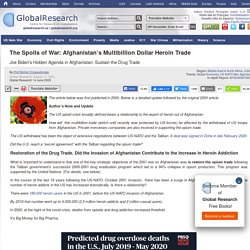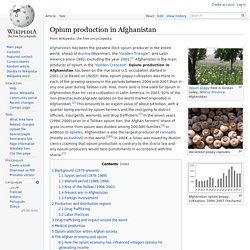

Timeline of the War in Afghanistan (2001–present) August 11 – NATO officially takes command of peacekeeping in Afghanistan.December 14 – 2003 loya jirga convened to consider the proposed Afghan Constitution.

January 4 – Constitution approved by loya jirga.January 26 – Constitution signed by President Hamid Karzai.October 9 – Afghan presidential election, 2004. In the country’s first direct election, Hamid Karzai wins the presidency with 55.4% of the vote. January 13: Damadola airstrike by US in Pakistan.February 1: The Afghanistan Compact is developed, establishing a framework of international cooperation with Afghanistan.March 29: Battle of Lashkagar. Taliban fighters attack a NATO base.May 15: Operation Mountain Thrust is launched, the largest offensive since the fall of the Taliban.July: Battle of Panjwaii between Canadian NATO forces and the Taliban.September 2: Canadians launch Operation Medusa.September 16: Operation Mountain Fury. The army of the United States moved out of Afghanistan. U.S. War in Afghanistan. The Spoils of War: Afghanistan’s Multibillion Dollar Heroin Trade. First published in 2005, updated in January 2015 and January 2016 Author’s Note In 2014 the Afghan opium cultivation has once again hit a record high, according to the United Nations Office on Drugs and Crime’s 2014 Afghan Opium Survey.

In the course of the last four years, there has been a surge in Afghan opium production. The Vienna based UN Office on Drugs and Crime (UNODC) reveals that poppy cultivation in 2012 extended over an area of more than 154,000 hectares, an increase of 18% over 2011. A UNODC spokesperson confirmed in 2013 that opium production is heading towards record levels. War is good for business. Source: United Nations Office on Drugs and Crime’s (UNODC) According to the 2012 Afghanistan Opium Survey released in November 2012 by the Ministry of Counter Narcotics (MCN) and the United Nations Office on Drugs and Crime (UNODC). potential opium production in 2012 was of the order of 3,700 tons, a decline of 18 percent in relation to 2001, according to UNODC data. Source: UNODC. Opium Afghanistan chart. Opium production in Afghanistan. Harvested poppy capsules.

Afghanistan opium poppy cultivation, 1994–2007 (hectares) Background (1979–present)[edit] Soviet period (1979–1989)[edit] As the Afghan government began to lose control of provinces during the Soviet invasion of 1979–80, warlords flourished and with it opium production as regional commanders searched for ways to generate money to purchase weapons, according to the UN.[8] (At this time the US was pursuing an "arms-length" supporting strategy of the Afghan freedom-fighters or Mujahideen, the main purpose being to cripple the USSR slowly into withdrawal through attrition rather than effect a quick and decisive overthrow.) As explained by Zbigniew Brzezinski: The secret operation was an excellent idea. It was alleged by the Soviets on multiple occasions that American CIA agents were helping smuggle opium out of Afghanistan, either into the West, in order to raise money for the Afghan resistance or into the Soviet Union in order to weaken it through drug addiction.